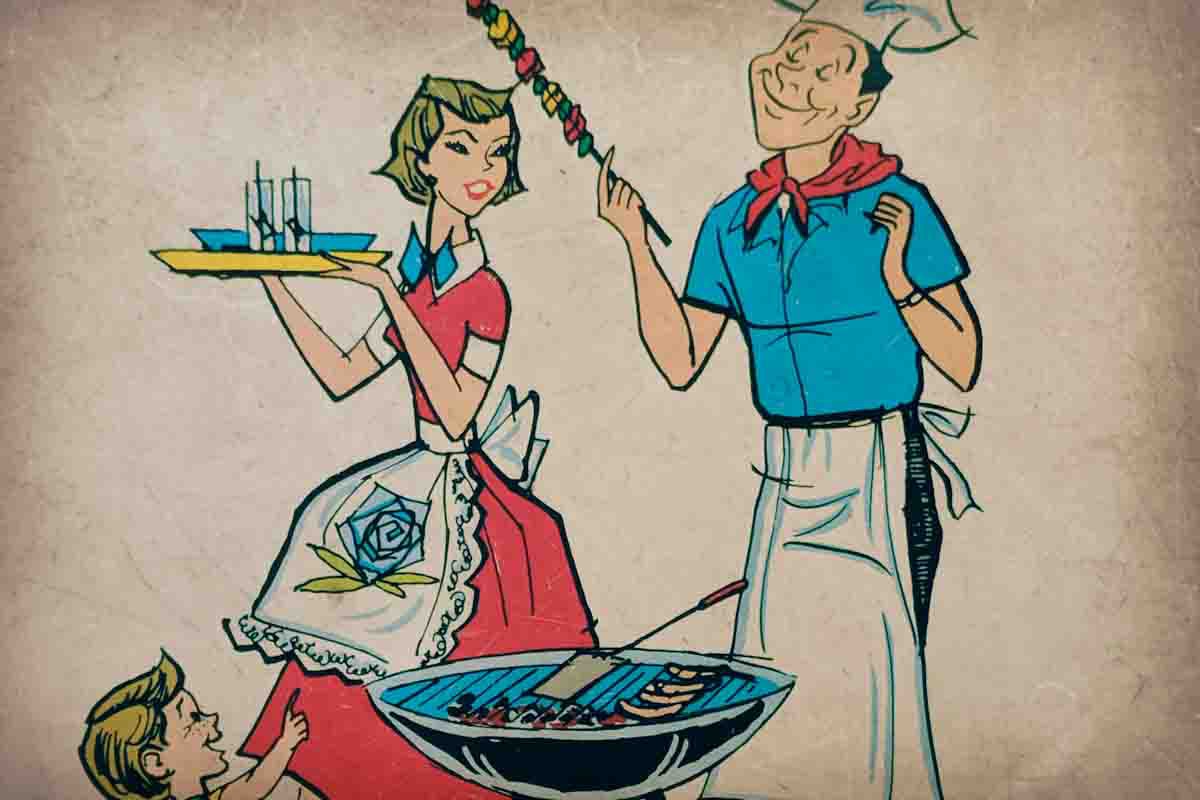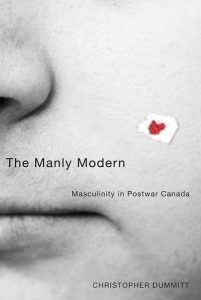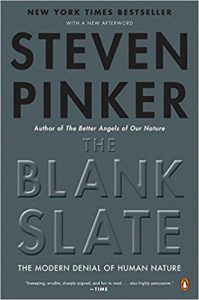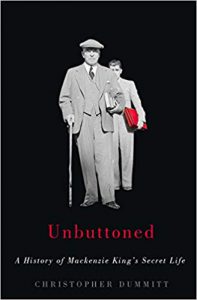Education
Confessions of a Social Constructionist
If I had known, 20 years ago, that my side in the ideological wars over gender and sex was going to win so decisively, I would have been ecstatic

If I had known, 20 years ago, that my side in the ideological wars over gender and sex was going to win so decisively, I would have been ecstatic. Back then, I spent many evenings at the pub or at dinner parties debating gender and identity with other graduate students; or, really, anyone who would listen—my mother-in-law, my relatives, or just a random person unlucky enough to be in my presence. I insisted that there was no such thing as sex. And I knew it. I just knew it. Because I was a gender historian.
This was, in the 1990s, the thing to be in history departments across North America. Gender history—and then gender studies, more generally, across the academy—was part of a broader group of identity-based sub-disciplines that were taking over the liberal arts. History departments across the continent were transformed. When the American Historical Association surveyed the trends among major fields of specialization in 2007, and then again in 2015, the single largest field was women’s and gender history. This was right up there with social history, cultural history, and the history of race and sexuality. Each of these fields shared the same worldview as I did—that just about every identity was a social construction. And, that identity was all about power.
Back then, quite a few people disagreed with me. Almost nobody who hadn’t been exposed to such theories at a university could bring themselves to believe that sex was wholly a social construct, because such beliefs went against common sense. That’s what makes it so amazing that the cultural turnaround on this issue has happened so quickly. Reasonable people might readily admit that some—and maybe a lot—of gender identity is socially constructed, but did this really mean that sex doesn’t matter at all? Was gender solely based on culture? Yes, I would insist. And then I would insist some more. There’s nothing so certain as a graduate student armed with precious little life experience and a big idea.
And now my big idea is everywhere. It shows up especially in the talking points about trans rights, and policy regarding trans athletes in sports. It is being written into laws that essentially threaten repercussions for anyone who suggests that sex might be a biological reality. Such a statement, for many activists, is tantamount to hate speech. If you take the position that many of my ’90s-era debating opponents took—that gender is at least partly based on sex, and that there really are two sexes (male and female), as biologists have known since the dawn of their science—uber-progressives will claim you are denying a trans person’s identity, which is to say, wishing ontological harm upon another human being.
I’m sure that I don’t need to instruct Quillette readers in all the ways in which this social constructionist logic has pervaded our culture. But what I can offer is a mea culpa for my own role in all of this, and a detailed critique about why I was wrong then, and why the radical social constructionists are wrong now. I once made the same arguments that they now make, and so I know how they are mistaken.
* * *

I have my full social-constructionist membership card. I finished that PhD in gender history and published my first book on the subject, The Manly Modern: Masculinity in Postwar Canada, way back in 2007. The title promised more than it delivers; it’s actually five case studies from the mid 20th-century, all centered on Vancouver, in which there was a public discussion of the “masculine” aspects of society. The examples I used were based on car culture, capital murder, a mountaineering club, a terrible incident of workplace violence (the collapse of a bridge), and a royal commission into the treatment of a group of military veterans. I won’t go into detail. But I’m ashamed of some of the contents—especially in regard to the two latter examples.
The book didn’t win any awards, but it seems to have become one of those books scholars sometimes cite whenever they want to write about the history of masculinity. Look, they’ll say, someone else wrote about this: That Canadian fellow Dummitt did way back in 2007. (Google Scholar tells me it has been cited 112 times as of July, 2019. That isn’t much. But Canadian history is a small field and citations numbers are usually quite low for everyone.) These days, masculinity—especially of the “toxic” variety—is a hot subject. But at the time, there were few books written about masculinity in Canada, and so mine got more than its share of attention.
I also published an article out of my Master’s thesis, which probably had a wider reach than my scholarly work. This was a fun article called Finding a Place for Father: Selling the Barbecue in Postwar Canada, which looked at the connection between men and barbecuing in Canada in the 1940s and 1950s. (Yes, this is the sort of thing that academics do.) First published back in 1998, it has been republished several times in textbooks for undergraduate students. Plenty of young university students, first learning about Canada’s history, have been forced to read that article to learn about the history of gender—and the social construction of gender.
The problem is: I was wrong. Or, to be a bit more accurate, I got things partly right. But then, for the rest, I basically just made it up.
In my defence, I wasn’t alone. Everyone was (and is) making it up. That’s how the gender-studies field works. But it’s not much of a defence. I should have known better. If I were to retroactively psychoanalyze myself, I would say that, really, I did know better. And that’s why I was so angry and assertive about what I thought I knew. It was to hide the fact that, at a very basic level, I didn’t have proof for part of what I was saying. So I stuck to the arguments with fervor, and denounced alternative points of view. Intellectually, it wasn’t pretty. And that’s what makes it so disappointing to see that the viewpoints I used to argue for so fervently—and so baselessly—have now been accepted by so many in the wider society.
My methodology worked like this: First, I would point out that, as a historian, I knew that there was a great deal of cultural and historical variability. Gender had not always been defined in the same way at all times and in all places. It was, as I put it in The Manly Modern, “a historically changing set of concepts and relations that gives meaning to differences between men and women.” How could you say that being a man or a woman was rooted in biology if we had evidence of change over time? What’s more, I insisted that “there are no ahistorical foundations for sexual difference rooted in biological or some other solid foundation that exists prior to being understood culturally.”
And I had my favourite examples, eventually working them into pithy anecdotes I could use in lectures or conversation—about Louis XIV and what I called his manly-calf pose, which would have been seen as the height of manliness back in the 1600s, but looks rather effeminate by today’s standards. Or I would talk about blue and pink, pulling out quotations from the 1920s that showed people saying little boys should wear pink because it was fiery and earthy, and girls should wear blue because it was airy and ethereal. And these would get a laugh and make my point. What we thought of as the absolute certain truth of gender had actually changed over time. Gender wasn’t binary: It was variable and maybe infinite.
Second, I would argue that whenever you came across someone saying that something was masculine or something was feminine, it was never just about gender. It was always, simultaneously, about power. And power was, and remains, a kind of magical word in academia—especially to a graduate student first reading Michel Foucault. Recall that we were then in the midst of endless discussions about “agency” (who had it? who didn’t? when? where?). So if someone denied that gender and sex were variable, if they suggested that there really was something timeless or biological about sex and gender, they were really making excuses for power. They were apologists for oppression. Sound familiar?
In my article on why men barbecued, for instance, I claimed to know that this spatula control was really about power more generally. “Can we view men’s involvement in domestic matters [barbecuing] as one small step in a progressive evolution?” I asked. No, of course not. Instead, the way people talked about men’s barbecuing “redefined and re-articulated older divisions between public and private and masculine and feminine.” In The Manly Modern, I was more explicit: “Gender is also about power…To refer to two concepts in a way that codes one as masculine and the other as feminine is to set up a hierarchy between the two.” There was never just a description of gender. Ideas about masculinity in the past were always created “for political purposes.” The particular ideas I talked about in the book, I argued, showed how people in the past, in describing things as masculine or feminine, had “provided an explanation of men’s and women’s differences and a powerful justification for inequality.”
And then, thirdly, I went looking for some explanation in the historical context that showed, at a particular historical moment, why people in the past talked about something as either masculine or feminine. History is a big place. And so there was always something to find. I wrote about the years after the Second World War, so you could always say that people were anxious about a return to normalcy after the war. Women had served in the military and had worked in “men’s” jobs. So the focus on gender distinctions was about getting women back into the home after their work during the war. It was all about control and oppression.
And, of course, people were anxious about these developments in the late 1940s. I could cite the research of others in this area, and thereby show—really show, I thought—that gender was a social construct, and it was being constructed in this way so as to put women back in their place after the Second World War.
You could cherry pick other contextual details. And indeed, in my book, I did just that. I had become fascinated by reading about the modernization of life at mid-century, and so I pointed out all of the ways in which people in the postwar years connected talking about modernity with talking about manliness. It was, as a work of scholarship, fairly elegantly done, if I may say. The problem was, it was also, partly, intellectually bankrupt.
Here’s where I wasn’t wrong: The archival research, I believe, was solid. I did go back into the documents from the time, and so was able to recover the way people spoke and wrote about being a man. I really got to know the era. This is the wonderful voyeuristic, pseudo-travel-writing part of being a historian.
To the extent that I stuck to the documents, and reconstructed how people talked in the past, I was on safe ground. This is, in the language of historians, the “how” of history. Historians privilege certain kinds of questions over others. Everyone is supposed to get the who, what, when and where right. These are the details of the past. But this kind of accuracy is, as the great historian E. H. Carr wrote, a duty, not a virtue. So it’s not something I offer as a boast.

But then there are two more questions, and these are the ones that really matter. The first of these was “how”: How did this happen? How did people think in the past? To answer these questions meant reconstructing patterns of thought. You can never fully reconstruct the thought patterns of others, especially those who lived in another era. But I do think that on this task, I got a passing grade.
But the biggest question of all—the most important—is the final one: “why?” Why did a certain event happen in the way that it did? In my case, it was: Why did postwar Canadians talk about men and women in the way that they did?
I had answers, but I didn’t find them in my primary research. They came from my ideological beliefs—even if, at the time, I wouldn’t have described this as ideology. Nor did my fellow scholars who adopted the same approach—and, unlike me, still do. But this is what it was, and is: a set of pre-formed beliefs that are built into the gender-studies disciplinary penumbra. Essentially, I followed the three-point Foucault-centric methodology outlined above.
People talked about men in the particular way I had described, I argued, because gender was a social construction whose outlines could be traced to power and oppression: Canadians used gendered thinking to empower some men and disadvantage women, to structure masculinity as better then femininity.
As to the larger question of whether gender is socially constructed, it wasn’t something I could prove. But in The Manly Modern, I cited prominent historian Joan Scott to this effect, and that seemed enough to satisfy the reviewers. In my book, I certainly showed that people talked in gendered ways. They described some things as masculine and others as feminine. Though even on this point, I could get creative: If something wasn’t specifically talked about as masculine or feminine, I could imply that this is what was meant. In one chapter of The Manly Modern, for instance, I argued that “ideals of the good driver and the good man—ostensibly separate categories—shared many characteristics.” I also argued that if contemporaries hadn’t pointed this out explicitly it was because it was just “assumed.” And if you threw in citations to another scholar who said the same thing, then this made sense.
Of course, it would be possible to look at the same material and come out with entirely plausible alternative explanations. Could postwar Canadians have socially constructed the idea that men were risk-takers? Yes, that’s plausible. But it’s also plausible that they talked about men in this way because, on average, men…took more risks. This could, in fact, simply be the way that men are. My research didn’t prove anything either way. I just assumed that gender was a social construct and proceeded on that basis.

I never engaged—at least not seriously—with anyone who suggested otherwise. And no one, at any point of my graduate studies, or in peer review, ever did suggest otherwise—except in conversations, usually outside of academia. And so I was never forced to confront alternative, biologically oriented explanations that were at least as plausible as the hypothesis that I’d dressed up with the air of certainty. Steven Pinker’s critique of social constructionism, The Blank Slate: The Modern Denial of Human Nature, was published in 2002 before I finished my PhD and before I published my book. Yet I hadn’t even heard of it, and no one ever suggested I might need to deal with its arguments and evidence. That alone should tell you a lot about the silo we all inhabited.
The only real criticisms I received were admonitions to strengthen the paradigm, or to fight for other identities and rail against other forms of oppression. (The idea that oppression absolutely existed based on these intersectional identities was simply assumed, not demonstrated, or proved.) So I might get asked why I didn’t talk more about class. Or why did I spend so much time talking about men and not women? Even if I was deconstructing masculinity and showing that it was a social construct, surely I needed to pay attention to women, too. Or how about sexuality? Did I not see more references to men who weren’t straight, and so shouldn’t I pay attention to the way in which masculinity was constructed alongside sexuality? You can extend such critiques in myriad ways. But the point is that all of them operated within the paradigm I already had embraced. It was exactly the sort of self-eating academic donut satirized by the recent grievance studies hoax.
* * *
Some of the first doubts I began to have about my graduate-school training began to creep in at this point. How long could the profession keep expanding by simply adding more and more kinds of oppression? Surely, at some point, history would actually be fully inclusive. In fact, I was pretty sure that was already the case. By 2009, I published a book with an essay entitled After Inclusiveness, making this point. Fortunately, I had a tenure-track job by the time the book came out. Many in the profession privately admitted I was right, but almost no one would say so in print.
I do remember one conversation with a genial older historian who graciously offered to read my article on men and barbecuing. I was a young PhD student and doing work entirely different from his. I don’t know why he offered, but his comments are telling. He politely told me that the middle bits were good but he could “take or leave” the parts at either end. That is, he liked the actual research in the paper, where I reconstructed how people talked about men and cooking in postwar Canada. But the part where I wrapped it all up in the ideology expressed by the recent books I’d read, not so much.
At the time, I didn’t make any changes. How could I? That was the paradigm I was committed to. It was in the introduction and conclusion that I was really hitting the points I wanted to make—that gender was a social construction, that postwar Canadians were anxious about men living domesticated lives in suburbs and being involved as hands-on fathers, and so they used this silly example of men and barbecuing as a way of saying that men weren’t really going to be too involved in cooking, and that when they did so it would be funny, and that of course they were bad at it, and only did it because it was dangerous and reminded them of cavemen days. Here was power at work—admittedly, in a sort of funny way—shoring up differences between men and women.
To reiterate: The problem was, and is, that I was making it all up. These were educated guesses I was offering. They were hypotheses. Maybe I was right. But neither I, nor anyone else, ever thought to scrutinize what I wrote. What that older scholar told me could apply to thousands of other papers and books: The middle is fine, but the parts at either end are dodgy.
Some basic questions present themselves. Have there really been wildly different and variable gender expectations over time and place? This isn’t something that can be answered with the pithy anecdotes I used to provide, and that people still trot out today. It ought to be studied systematically and comparatively. In my own reading at the time, I have to admit now that what I was seeing was slight variability with a degree of central consistency. Ideas about men as providers, risk-takers, and those with a special responsibility for protection and warfare, seem to be fairly consistent throughout history and cultures. Yes, there are variations over the life cycle, and some cultural and historical particularities. But if you didn’t start your research assuming that the small differences must matter greatly, it’s not clear that you would conclude this from the evidence.
And was it really always about power? Maybe. And maybe not. The proof that I used to insist that it was about power was to cite other scholars who said it was. It helped if their names were French and they were philosophers. The work of an Australian sociologist, R. W. Connell, helped, too. He’d argued that masculinity was primarily about power—about asserting dominance over women and other men. In reality, his work didn’t prove this; it just plausibly extrapolated from small case studies, just like I had done. So I cited Connell. And others cited me. And that’s how you “prove” that gender is a social construct and all about power. Or, in fact, anything at all.
My flawed reasoning, and other scholarship using the same defective thinking, now is being taken up by activists and governments to legislate a new moral code of conduct. It was one thing when I was having drinks with fellow grad students and battling it out in the inconsequential world of our own egos. But now much more is at stake. I wish I could say that the scholarship has become better—the rules of evidence and peer review more demanding. But the reality is that the current almost total acceptance of social constructivism in certain circles seems more the result of demographic change within the academy, with certain viewpoints coming to dominate even more than in my grad-school heyday.
This confession should not be interpreted as arguing that gender is not, in many cases, socially constructed. But critics of the social constructionists are right to raise their eyebrows at the so-called proof presented by alleged experts. My own flawed reasoning was never called out—and, in fact, only became more ideologically inflected through the process of peer review. Until we have seriously critical and ideologically divergent scholarship on sex and gender—until peer review can be something more than a form of ideological in-group screening—then we ought to be very skeptical indeed about much of what counts as “expertise” on the social construction of sex and gender.







